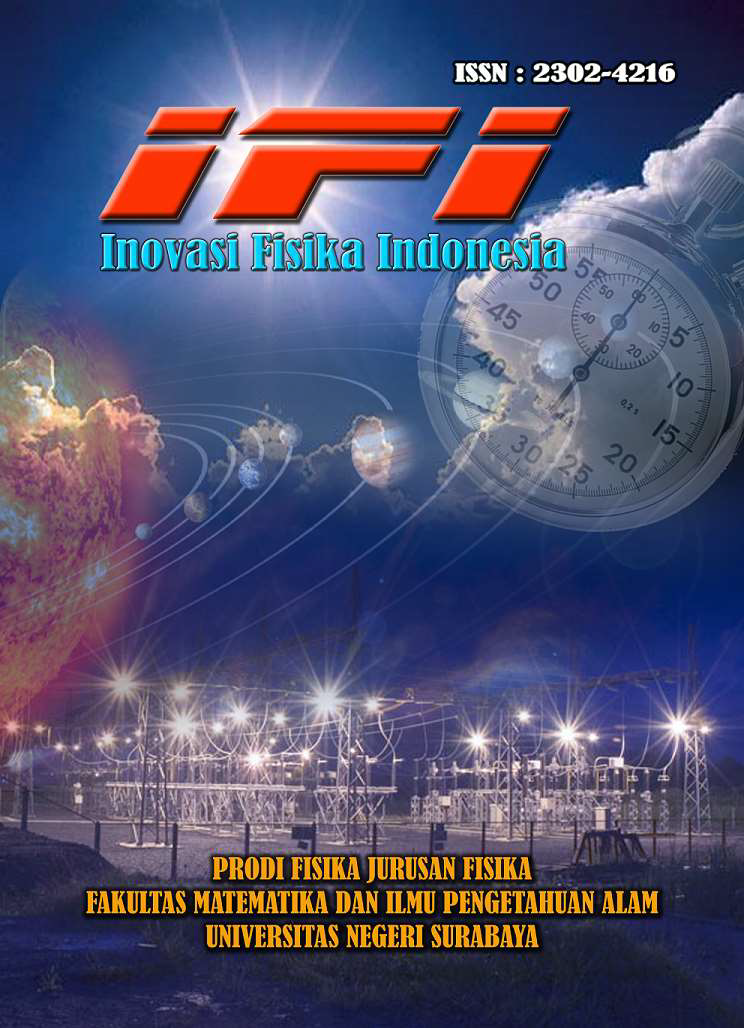KARAKTERISASI STRUKTUR DAN DISTRIBUSI UKURAN PARTIKEL SERBUK Mg(Ti0,96Sn0,04)O3 HASIL SINTESIS DENGAN METODE PENCAMPURAN LARUTAN SEBAGAI AKIBAT VARIASI WAKTU TAHAN KALSINASI
Kata Kunci: Serbuk MTS004; doping ion Sn4+; komposisi fasa; distribusi ukuran partikel
DOI:
https://doi.org/10.26740/ifi.v12n3.p1-9Downloads
Download data is not yet available.
Downloads
Published
2023-07-06
How to Cite
Andalus, A., & Ermawati, F. U. (2023). KARAKTERISASI STRUKTUR DAN DISTRIBUSI UKURAN PARTIKEL SERBUK Mg(Ti0,96Sn0,04)O3 HASIL SINTESIS DENGAN METODE PENCAMPURAN LARUTAN SEBAGAI AKIBAT VARIASI WAKTU TAHAN KALSINASI: Kata Kunci: Serbuk MTS004; doping ion Sn4+; komposisi fasa; distribusi ukuran partikel. Inovasi Fisika Indonesia, 12(3), 1–9. https://doi.org/10.26740/ifi.v12n3.p1-9
Issue
Section
Fisika Material
 Abstract views: 217
,
Abstract views: 217
, PDF Downloads: 1590
PDF Downloads: 1590








1.png)
